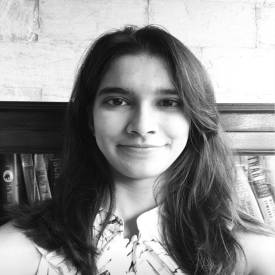How class and caste influence school choice
Families' socioeconomic status impacts how parents make decisions regarding their children's education. Taking into account the interplay of caste and class, this paper finds that when families are to...
- Articles
A permanent cordon-sanitaire: Dalits and Muslims in urban India
Near-perfect segregation and hierarchical ordering of residential space, based on caste or religious identity, is a well-known feature of rural India. Studies have also documented the persistence of s...
-
 Naveen Bharathi
Naveen Bharathi  Deepak Malghan
Deepak Malghan  Andaleeb Rahman
Andaleeb Rahman  09 October, 2020
09 October, 2020
- Articles
Are women politicians good for economic growth?
There has been a phenomenal global increase in the proportion of women in politics in the last two decades, but there is no evidence of how this influences economic performance. This article investiga...
-
 Sonia Bhalotra
Sonia Bhalotra  05 December, 2018
05 December, 2018
- Articles
Does caste identity still matter for occupational choice?
In today’s India, to what extent do people avoid jobs solely due to their sense of caste identity? This article discusses an experiment in rural Odisha that involves offering one-day jobs to workers...
-
 Suanna Oh
Suanna Oh  29 July, 2020
29 July, 2020
- Articles
Son preference, maternal health, and women’s survival: A cross-cultural analysis
Lifetime risk of maternal death in developing countries is 33 times higher as compared to the developed world. This article examines the role of cultural norms in influencing maternal morbidity and mo...
-
 Neha Agarwal
Neha Agarwal  Annamaria Milazzo
Annamaria Milazzo  16 July, 2020
16 July, 2020
- Articles
IGC Panel Discussion on gender and education: From policy to practice
The International Growth Centre, in collaboration with the Asian Development Research Institute (ADRI), the Gender Resource Centre (GRC), the Women Development Corporation of the Government of Bihar, ...
-
 Kumar Das
Kumar Das  Manish Kumar Prasad
Manish Kumar Prasad  19 June, 2020
19 June, 2020
- Videos
Prejudice in a pandemic: Covid rumours and factory labour supply
Since the Tablighi Jamaat event – an Islamic congregation held in Delhi in mid-March – led to a large cluster of Covid cases, malicious rumours about Muslims spreading the disease started circulat...
-
 Arkadev Ghosh
Arkadev Ghosh  08 May, 2020
08 May, 2020
- Notes from the Field
IGC Panel Discussion: Women’s economic empowerment
In December 2019, the India Programme of the International Growth Centre (IGC), organised a panel discussion on ‘Women Economic Empowerment: Constraint & Solutions’ in Patna, in collaboration with...
-
 Shivani Chowdhry
Shivani Chowdhry  Rishabh Mahendra
Rishabh Mahendra  29 April, 2020
29 April, 2020
- Videos
Covid-19: Lockdown and domestic abuse
As governments across the globe enforce lockdowns of varying degrees to mitigate the spread of Coronavirus, a horrifying fallout has been a surge in reports of domestic violence in several countries, ...
-
 Nalini Gulati
Nalini Gulati  19 April, 2020
19 April, 2020
- Perspectives
Women in the economy: Emerging issues
As the world adjusts to the new reality brought on by the Covid-19 pandemic, the workspaces of the future may look very different from what they are today. How would these changes impact women? To bet...
-
 Farzana Afridi
Farzana Afridi  Nalini Gulati
Nalini Gulati  13 April, 2020
13 April, 2020
- Perspectives
IGC Panel Discussion: Gender and labour
Latest official data show that female labour force participation (FLFP) in India has declined from 33.1% in 2011-12 to 25.3% in 2017-18. The state of Bihar has the lowest FLFP in the country. To delib...
-
 Nalini Gulati
Nalini Gulati  06 March, 2020
06 March, 2020
- Videos
IGC Panel Discussion on gender: Equality and empowerment
In August 2019, the India Programme of the International Growth Centre (IGC) – in collaboration with the Women Development Corporation (WDC), Government of Bihar, and the Asian Development Research ...
-
 Kumar Das
Kumar Das  17 February, 2020
17 February, 2020
- Videos
Expanding opportunities in India’s labour market: Gender, skills, and migration
In September 2019, the International Growth Centre (IGC) organised a panel discussion in New Delhi to bring together experts to deliberate on the evidence around the causes of low female labour force ...
-
 Nalini Gulati
Nalini Gulati  Ella Spencer
Ella Spencer  27 January, 2020
27 January, 2020
- Videos
What can Question Hour tell us about representation in the Indian Parliament?
Is a numeric representation of Indian Members of Parliament (MPs) from particular sociological backgrounds important to achieve a substantive representation of their group interests? This article answ...
-
 Saloni Bhogale
Saloni Bhogale  13 January, 2020
13 January, 2020
- Articles
IGC Special Lecture: To be or not to be
In December 2019, an international conference on ‘Closing the gender gap: Health, education and economic opportunities’ was held at Patna, Bihar. Development economist and activist, Devaki Jain, d...
-
 Devaki Jain
Devaki Jain  06 January, 2020
06 January, 2020
- Videos
Twitter feed
Tweets by Ideas4IndiaMost Popular Social Identity Posts
A division of labourers: Caste identity and efficiency in India
Castes in India are closely associated with certain occupations and determine the jobs done by millions. This study uses a new dataset to show that a large proportion of workers still work in their ca...
 Guilhem Cassan
Guilhem Cassan  Daniel Keniston
Daniel Keniston  Tatjana Kleineberg
Tatjana Kleineberg  18 November, 2022
18 November, 2022
- Articles
Hindu-Muslim fertility differentials in India: An update
Building on past research, Saswata Ghosh and Pallabi Das estimate the state- and district-level fertility differentials between Hindus and Muslims using data from the latest round of the NFHS. They sh...
 Pallabi Das
Pallabi Das  Saswata Ghosh
Saswata Ghosh  18 April, 2023
18 April, 2023
- Articles
Sex ratios and religion in India and South Asia
In South Asia, low child sex ratios are increasingly an isolated Indian phenomenon. Within India, child sex ratios are ‘normal’ among Christians and Muslims but much lower among Hindus, Sikhs, and...
 Swati Narayan
Swati Narayan  03 April, 2019
03 April, 2019
- Articles





 04 March, 2024
04 March, 2024






